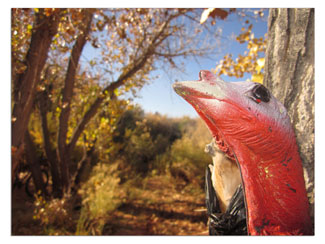
Creeksgiving
I write these words with visions of climbing red rock sandstone, cooking turkeys in carefully dug pits in the dirt, and sipping good beer in the Utah desert swirling in my head. By the time these words go to print, I’ll be living the dream, celebrating my favorite holiday, Thanksgiving, in Indian Creek, on the southern edge of Canyonlands National Park.
Thanksgiving is my favorite holiday because it is the simplest, sharing food and drink with friends, old and new. Of course we’re out there for the climbing, too. Indian Creek is known to have the most perfect climbing cracks in the entire world; people travel from all over to experience what is basically in our back yard.
The proximity to Indian Creek and the red rock desert is a major reason why I live in Durango. I know I could easily find better job opportunities elsewhere, but the truth is, I’d rather be broke and happy here than rich and unhappy somewhere else. And a big reason why I’m happy here is because I can climb to my heart’s content, in just about any season.

The climbing at Indian Creek is masochistic, pain for pleasure. It involves jamming your limbs into whatever size the crack is: an inch takes your fingers and 8 inches demands your shoulders and legs. To write these words onto paper makes it sound silly, to do it provides an athletic alchemy of endorphins that feels divine; a feeling I can never get enough of, and my desert junkie friends can’t seem to get enough of either.
We are a tribe in the desert that gathers how modern recreationists have been gathering for the last generation or so, though going to the desert now is almost like going back in time. At The Creek, our cellphones don’t work, I hope they never do out there, and everything is so surreal it’s as if Ed Abbey himself might walk up to the campfire and hit the peace pipe.
Thanksgiving dinner involves three to four turkeys cooked in pits all day (sometimes we’ll even get a Tofurky thrown in there), and 20 some other dishes, all meticulously lined up for sharing. We always go around to other campsites and invite strangers, friends we haven’t met, to dinner, and our campfire circle is typically 40 to 50 people, stuffing themselves delightfully under the cool desert sky.
After dinner we have an epic dance party, but first, while digesting everything we’ve just stuffed ourselves with, we go around the campfire and everyone states what they are thankful for. It’s a beautiful thing. I remember vividly what I was thankful for last year: that my friends who had recently been in climbing accidents survived. There were three that year, they all involved big falls, one with human error and the other two were on terrain with loose rock. Any of these easily could have resulted in death, but fortunately none did.
For many mountain folk, this time of year marks the transition from land-based recreation to snow based, and thus out in the desert at this time of year, there are always folks talking about how excited they are about the upcoming ski season. I always just sit and listen, because I don’t ski. If skiing is a religion as it seems to be, then I am a gentile. My backcountry skiing friends are always discussing the delicate science of snow stability, and I find the risk vs. reward component of skiing fascinating. While climbing is full of inherent risk, I don’t think it compares to the intensity of assessing avalanches.
Shortly after last year’s Thanksgiving celebration, I lost a dear friend who died in an avalanche. Adam Lawton was a hardcore backcountry skier, who had a hunger for living and an insatiable appetite for powder. He is one of three friends who have died in avalanches, making that the No. 1 cause of death amongst the young people I know who have passed away.
The last time I saw Adam was at Indian Creek at last year’s Thanksgiving. We partied and climbed together for what would be the last time sharing each other’s company in this life.
Though I’d like to think the climbing I do is safer than my friends who ski in the backcountry, my track record of near-death experiences proves me wrong. Both happened early in my climbing career, more than 10 years ago, but either could have claimed my life. The first was a 40-foot head first fall, where I landed a few feet above the ground; and in the second, I rappelled off the end of my rope hundreds of feet above the ground, but luckily I was wedged inside a chimney and didn’t fall to my death.
My reaction to both of these near death-experiences surprised me, I simply got right back to it. I didn’t sit around to reflect if I should be risking my life with climbing, I just continued with the adventure. I don’t know if that reaction was the result of adrenaline and testosterone, or a way to validate that I was doing what I loved.
As I get older, I certainly get more conservative. Safer climbing with protection is more appealing than dangerous big walls. I reflect a lot on my younger days, and I realize I made some very stupid mistakes that I barely survived. Tears well up when I think of my friends who weren’t so lucky, those who lost their lives while they followed their passions for experiencing the great outdoors to the fullest.
With these thoughts in mind, I know I have plenty to be thankful for this Thanksgiving. I’ll party and climb with my tribe in the desert that defines my existence, while honoring the spirits of those that would be there if they were still around. I can’t think of anything I’d rather do for my favorite holiday.
What are you thankful for?
– Luke Mehall
